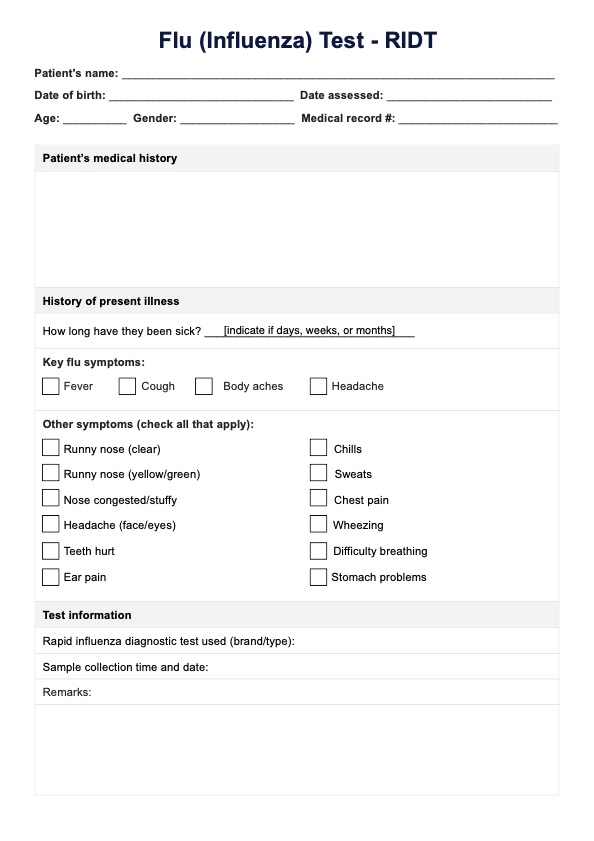It can be self-administered, and you can get results almost immediately. However, it has a higher chance of yielding false positive or negative results than RT-PCR tests. That doesn’t mean that RIDT Flu Tests are unreliable. If the symptoms are evident after getting a positive result, you can trust it.

Flu (Influenza) Test - RITD
Learn about basic flu tests and use our template to record RIDT results!
Use Template
Flu (Influenza) Test - RITD Template
Commonly asked questions
Influenza C is a mild version; those with it don’t become so ill that their daily lives are horribly affected. It also doesn’t cause epidemics or pandemics.
RIDT Flu Tests can only detect Influenza A and B. Some kits can also detect COVID-19. It is best to take an RT-PCR Test to check a patient for Influenza C.
EHR and practice management software
Get started for free
*No credit card required
Free
$0/usd
Unlimited clients
Telehealth
1GB of storage
Client portal text
Automated billing and online payments











